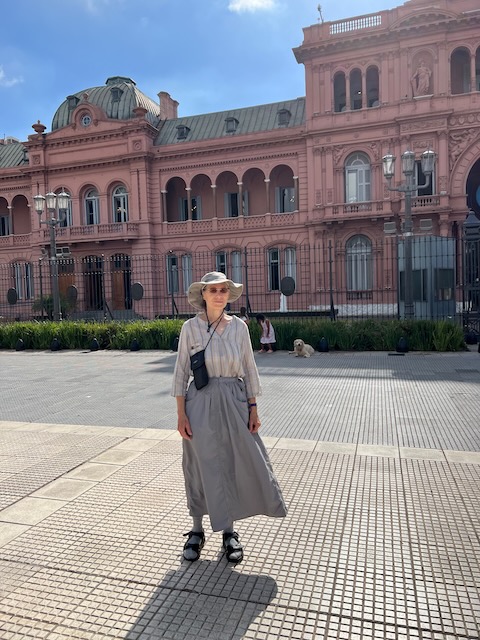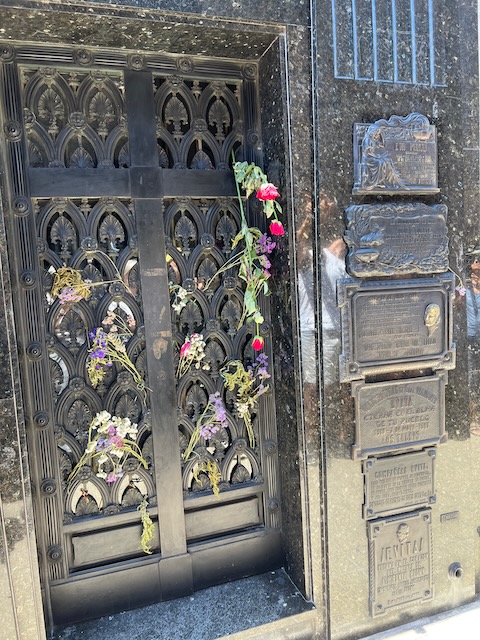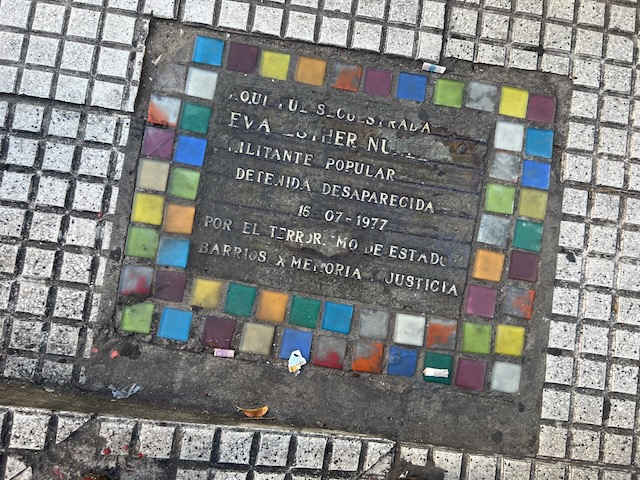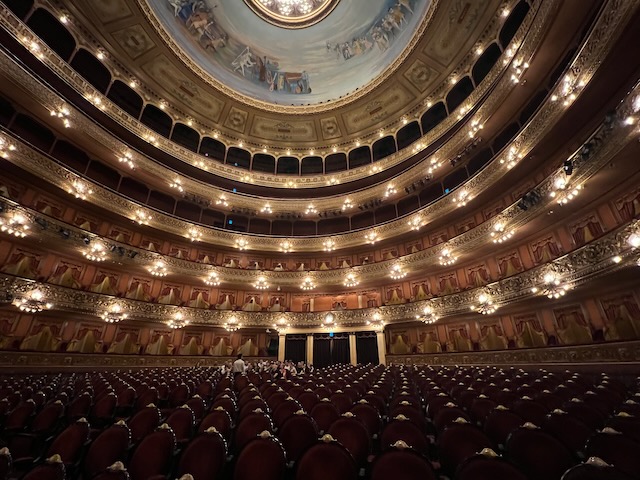Buenos Aires, the port city of the Saint providing good winds, is a bright urban center, buzzing with commercial enterprise, very European in look and feel. I arrive at our hotel in the San Telmo area just at the end of their Sunday market, with the street closed off from traffic and lined on both sides with stalls selling colorful arts and crafts. It is also where I am reunited with the rest of my group of 12 as we begin our scheduled tour. Everyone has arrived in relatively good shape, with all our luggage, and it is wonderful to be with this collection of old and newer friends.

On our first night, 9 of us go out for a traditional local Argentinian dinner at a Paradilla, steak house, La Brigada, and it is packed with people and decorated with soccer mementos, shirts, photos and objects to remind everyone of the country’s achievements in the past and this year’s world cup.
Our free time is spend walking in various groups in this central area of the city, with beautiful green spaces, and some large and elegant Spanish style buildings. It is interesting to me that although gaining independence from Spain in the 19th century, the architecture chosen for its expansion and urbanization at the turn of the 20th century remains similar to that adopted from its former motherland. Many of the older apartment buildings, many with ironwork balconies, and government buildings are more reminiscent of Madrid than other European or North American cities. Perhaps due to the continuing influence of the Spanish-style Catholic Church.
Our afternoon is spent on a tour of the Jewish history and culture of the city led by a guide who brought us into the world of the immigrants encouraged to populate a country with space and a desire to acquire European culture — after almost completely destroying the indigenous culture in the “Desert War” in the 19th century. Our guide also helped us understand Jewish life today, with 200,000 Jews and 55 synagogues, very much integrated into the life of the city without anti-semitism. The two late 20th century bombings of the Israeli Embassy and the Jewish Federation Building are explained as the work of Iranian extremist and not reflecting the mindset of Argentina.
Our walk through Once, one of the Jewish districts, and the current garment center, tugged at my memory of youth on Flatbush Avenue in Brooklyn, the images and colors throwing me back into another place of Jewish culture.

And then we made respectful visits to the sites of the bombings and a new memorial erected in remember the 87 who died from the terrorist attack.
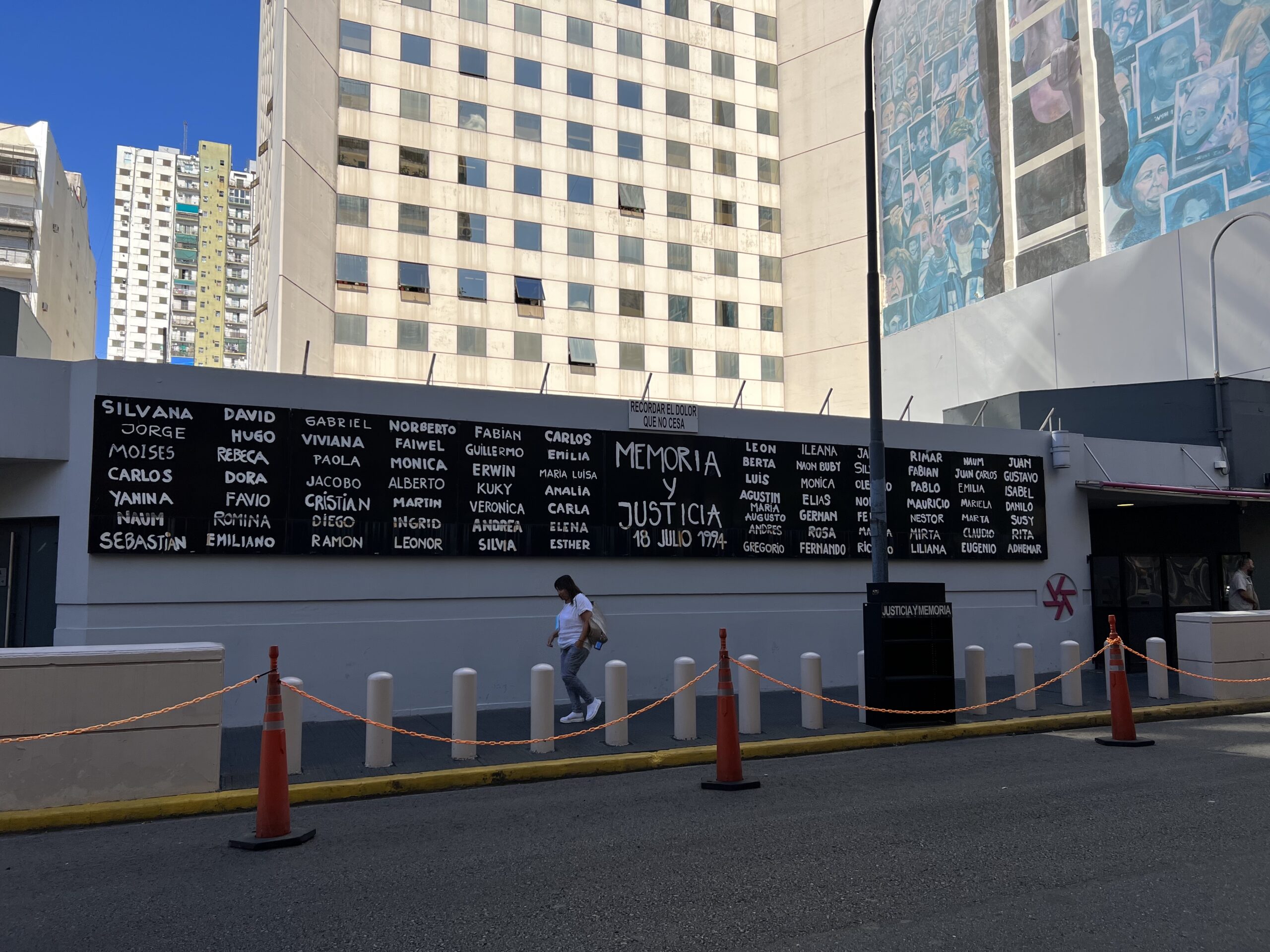
Our half-day historical overall tour of the city the next day included the major Plaza de Mayo and a stop in the Boca Area, where every tourist goes to see the colorful buildings but I think just as impactful is the Boca Football (Soccer) Club area with its bright blue and gold painted fields proudly indicate the importance, and money, invested in this sport.
The old cemetery in Recoleta took us into the city of the dead where great mausoleums of the wealth and powerful now remind us of people and time past.

The dark days of this country as purposefully made more apparent than in other places, with or without the government’s approval. There are commemorative stones through the city set into sidewalks to remind us of those who fought again the oppressive regimes. And the grandmothers of the disappeared still silently protest weekly to remember those children killed and the grandchildren forcefully taken away and given to other families in the 1970’s.
Our last group outing here was to see the inside of the Teatro Colon, one of the great opera houses of the world built in about 1906 with one of the best acoustics of a large hall anywhere, said to be matched only by the Met in NY and the Sydney Opera House.
The food here has been exceptionally good and unexpectedly expensive, even given our dollar exchange rate of 350 pesos per dollar compared to the common rate of about 185/$1. There is rampant inflation here, putting pressure on everyone and everything, and just last month the government changed its policy to allow foreign banks to convert at a rate of about 300 pesos/$1 with the unlicensed but still accepted exchange sites, such as our hotel front desk, providing us $355/$1. Nevertheless, a meal can easily cost 5000 pesos or close to $20.
But the food has been wonderful. Even the vegetables I had at the Paradilla were delicious and one night a group of us went to a local Japanese restaurant with a variety of Buddhist iconography on its walls and had wonderful tofu and sushi, with raw salmon being the main seafood. And tonight, Rich, Geri, Ginny and myself went out to a very pleasant excellent vegetarian/vegan cafe. Food is obviously important here. On one of our walks, we found a small co-coop with organic produce, wine, grains and other products. But although a major soy bean exporter, it appears soy milk is not to be found – only almond milk for the lactose-impaired.
Almost everyone went out to a Tango show tonight while I stayed in to rest and put this post together for you. Tomorrow, we fly South. Everyone feels we have had a good general impression of Buenos Aires and Argentina as we expand ourselves to more remote regions. We won’t have electricity or wifi for a few days so my next report will be a while.



